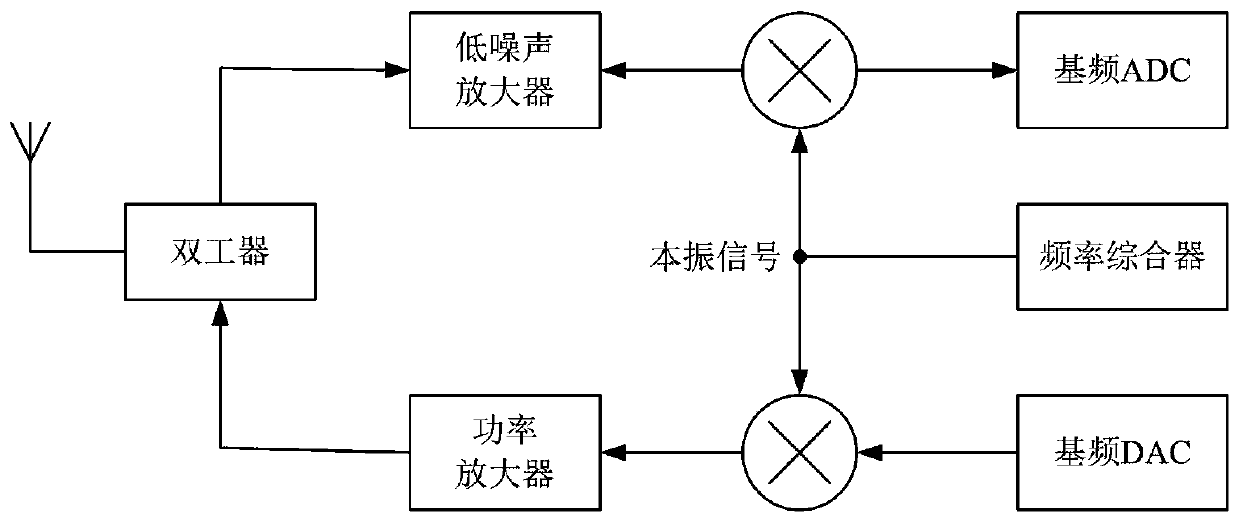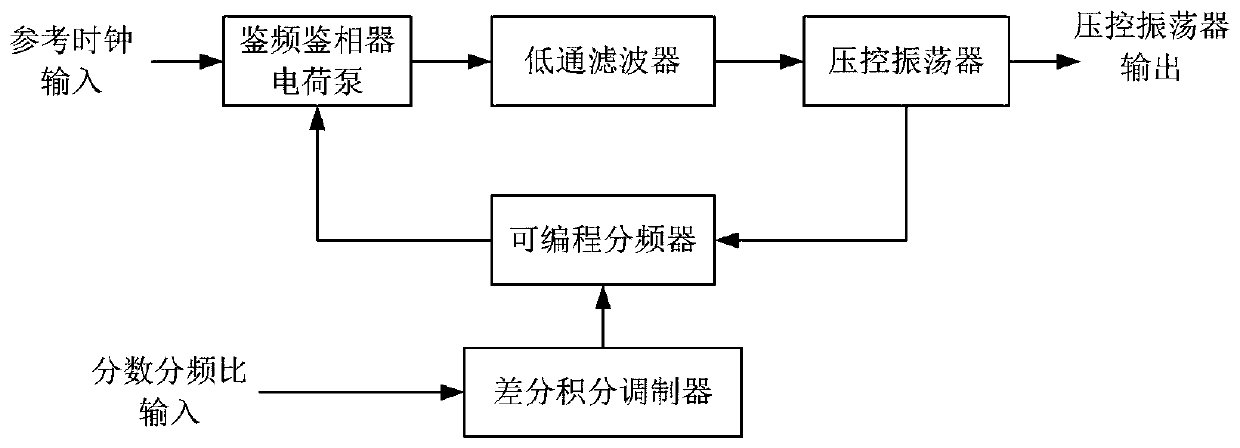A low-pass filter of the frequency synthesizer
A frequency synthesizer, low-pass filter technology, applied in the direction of automatic power control, impedance network, electrical components, etc., can solve the problem that the LPF capacitor area is too large to be integrated on-chip, increase the chip area, chip cost, and capacitance density of capacitor devices. It can achieve the effect of on-chip integration, reducing debugging complexity, and reducing application costs.
- Summary
- Abstract
- Description
- Claims
- Application Information
AI Technical Summary
Problems solved by technology
Method used
Image
Examples
Embodiment 1
[0036] Such as Figure 7 As shown, the low-pass filter of the frequency synthesizer includes a first capacitor, a sixth resistor, and a sixth capacitor, one end of the first capacitor is used as a circuit input end, the other end is connected to the ground, and one end of the sixth resistor is connected to The circuit input terminal, the other end of the sixth resistor is connected to one end of the sixth capacitor, and the other end of the sixth capacitor is grounded. It is characterized in that it also includes a differential amplifier circuit, and the positive input terminal of the differential amplifier is connected to the sixth The other end of the resistor is connected, the negative input end of the differential amplifier circuit is connected to the output end, the output end of the differential amplifier circuit is also connected to one end of the fifth resistor, and the other end of the fifth resistor is connected to the circuit input end. Such as Figure 10 to Figure...
Embodiment 2
[0038] Such as Figure 8 As shown, the difference from Embodiment 1 is that it also includes a third resistor and a third capacitor, one end of the third resistor is connected to the input end of the circuit, the other end is used as the output end of the circuit, and the other end of the third resistor is also It is connected with the third capacitor, and the other end of the third capacitor is grounded.
Embodiment 3
[0040] Such as Figure 9 As shown, the difference from Embodiment 2 is that it also includes a fourth resistor and a fourth capacitor, one end of the fourth resistor is connected to the output end of the circuit, and the other end is used as a new output end of the circuit, and the other end of the fourth resistor is One end is also connected to the fourth capacitor, and the other end of the fourth capacitor is grounded.
[0041] The working principle analysis of the technical solution provided by the present invention is as follows:
[0042] For a traditional second-order LPF, such as Figure 4 As shown, the corresponding new second-order LPF structure is as Figure 7 shown. The new second-order LPF consists of a differential amplifier (AMP), sixth resistor Rx, fifth resistor Ry, first capacitor C1, and sixth capacitor Cx, wherein the first capacitor C1 is exactly the same as the first capacitor C1 in the traditional second-order LPF.
[0043] 1) The differential amplifier ...
PUM
 Login to View More
Login to View More Abstract
Description
Claims
Application Information
 Login to View More
Login to View More - R&D
- Intellectual Property
- Life Sciences
- Materials
- Tech Scout
- Unparalleled Data Quality
- Higher Quality Content
- 60% Fewer Hallucinations
Browse by: Latest US Patents, China's latest patents, Technical Efficacy Thesaurus, Application Domain, Technology Topic, Popular Technical Reports.
© 2025 PatSnap. All rights reserved.Legal|Privacy policy|Modern Slavery Act Transparency Statement|Sitemap|About US| Contact US: help@patsnap.com



